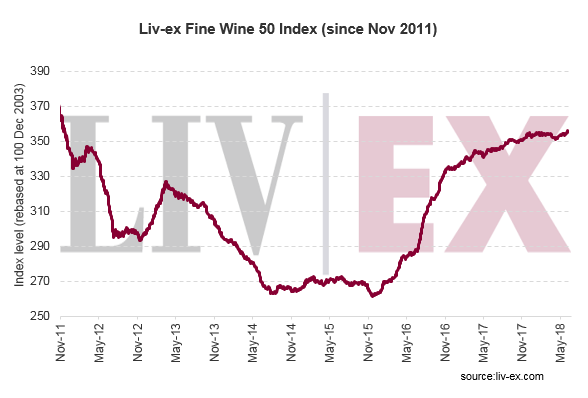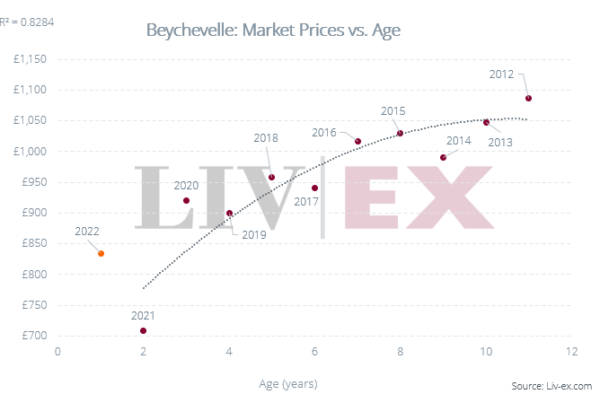• Weekly trade surpasses record set in May
• Liv-ex 50 reaches six and half year high
• Haut Brion 1989 this week’s most active wine
• Bordeaux 2017 releases
Bordeaux 2017 releases came thick and fast for the majority of the week. Until Thursday it seemed like this had been to the detriment of secondary market activity, before a flurry of high value transactions pushed weekly trade to a new record high for 2018.
The market’s fixation with older Bordeaux vintages continued. Nonetheless, Bordeaux’s trade share dipped slightly to 67.2% as Burgundy trade from big names such as Roumier and Rouget lifted the region’s market share to 16.6%.

Prices for the First Growths picked up for the second consecutive week. The Liv-ex Fine Wine 50 closed Thursday at 356.22, an increase of 0.4% on last Thursday, placing the index at its highest level since the middle of November 2011.

Haut Brion 1989 was the most active wine once again. The last trade price of £25,000 per 12×75 is a new all-time high and represents an increase of 19% on May’s record.
Bordeaux 2017
Bordeaux 2017 resumed after a brief hiatus. Calon Segur, Carmes Haut Brion, Rauzan Segla came with a healthy discount to Liv-ex’s fair value estimates and are understood to have been well received. As if to make up for the last two years, Canon came out with a slight premium, yet still seemed to work with the trade given the goodwill built up from the 2015 and 2016 vintages.
Shrewd Liv-ex members almost guessed the exact release price of Cos d’Estournel but it was still probably a touch too high. Followers of the Wine Advocate and Lisa Perotti-Brown MW may disagree, given that she marked the wine as having the potential to be 100 points.
However, once again the majority of releases were wide of the mark. Price decreases might generate headlines but they are redundant if they do not bring the ex-London opening level to a point that enables the wines to be priced fairly, relative to what is already available in the market. Instead, chateaux owners are relying on negociants to hold stock for them and wait for the market to move in the desired direction. As we discussed in our Bordeaux 2017 report, this is not a viable strategy for the long-term health of the market.
[mc4wp_form id=”18204″]





